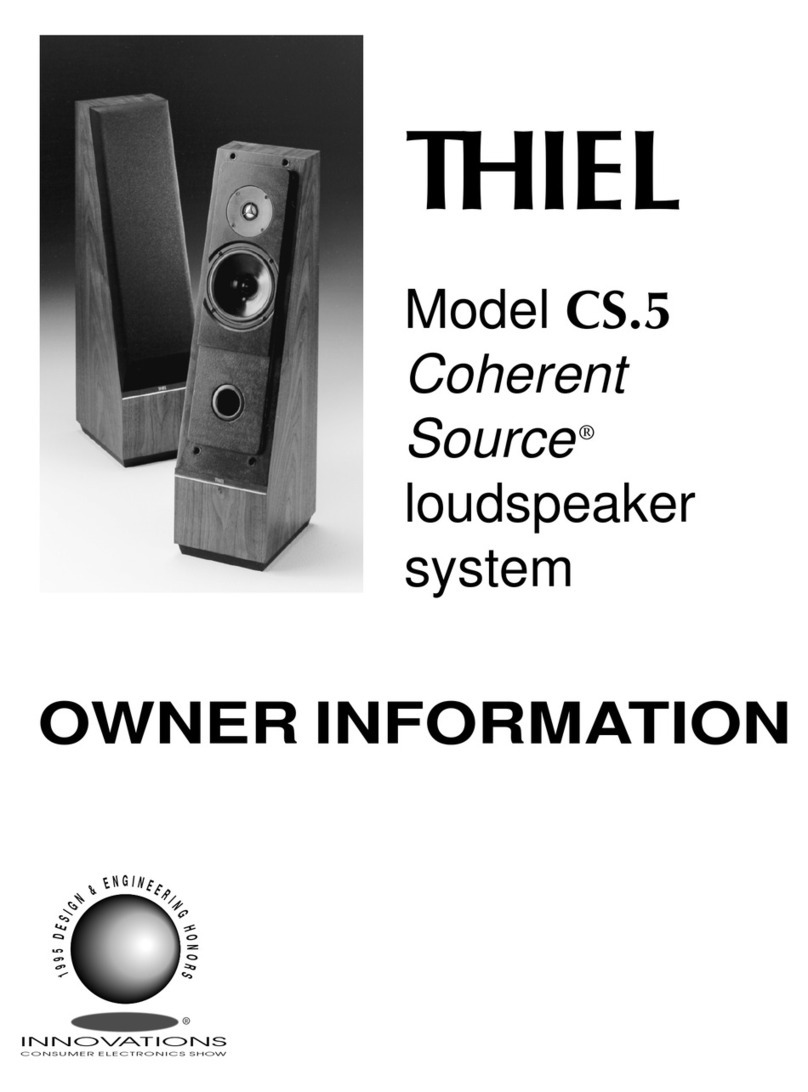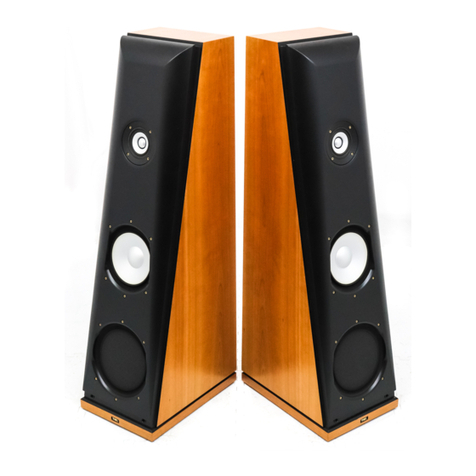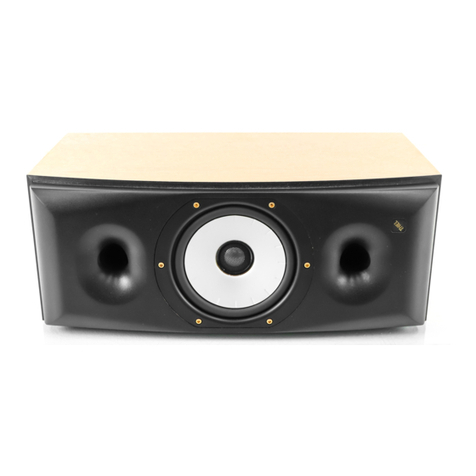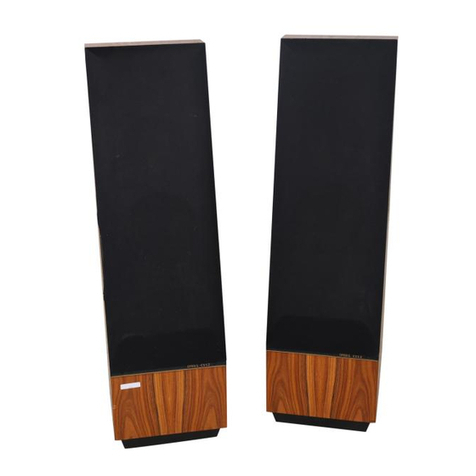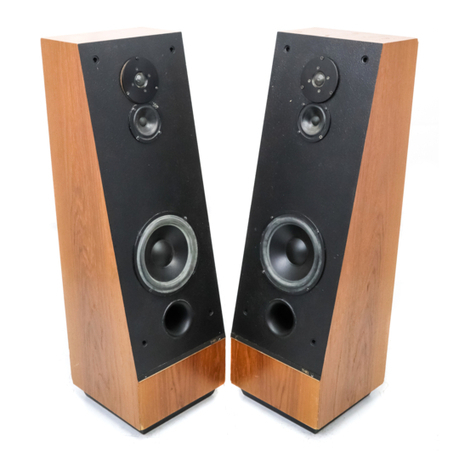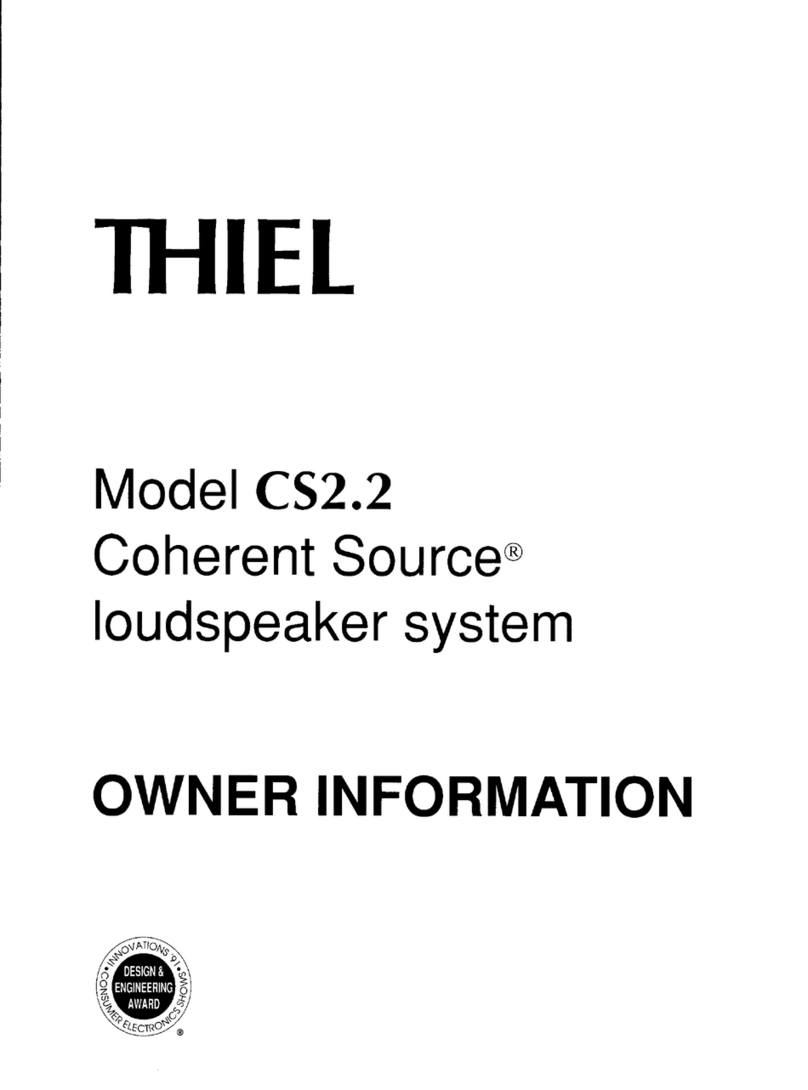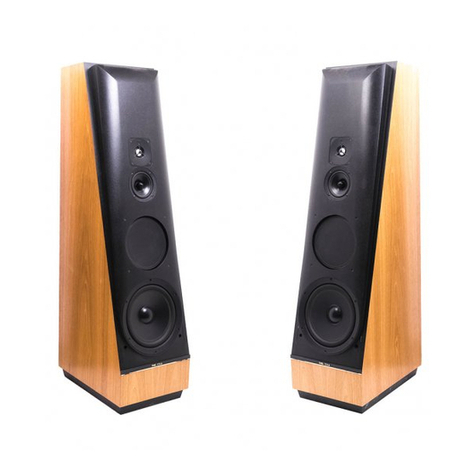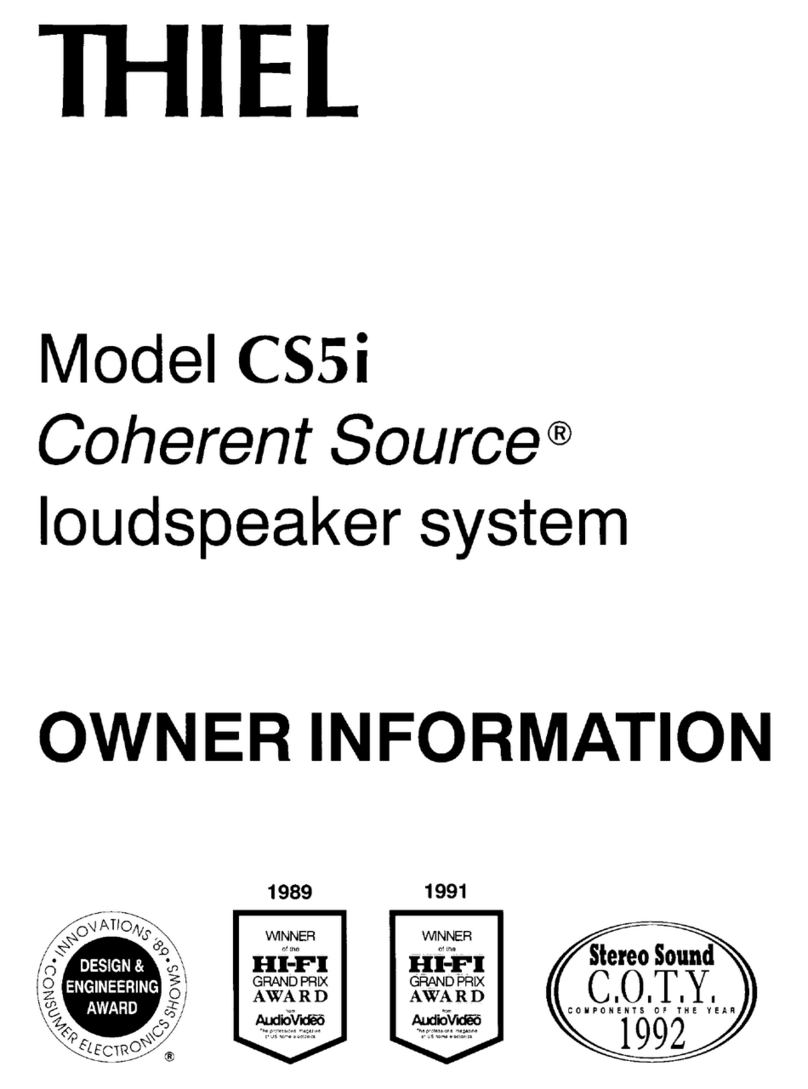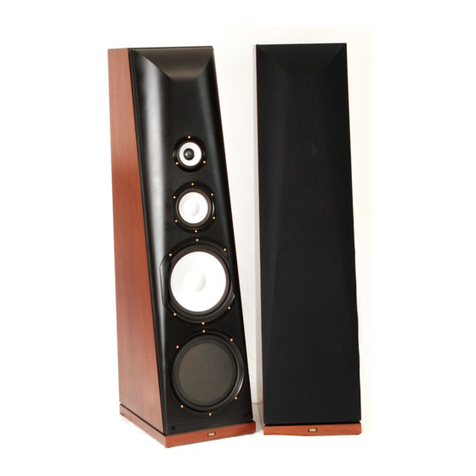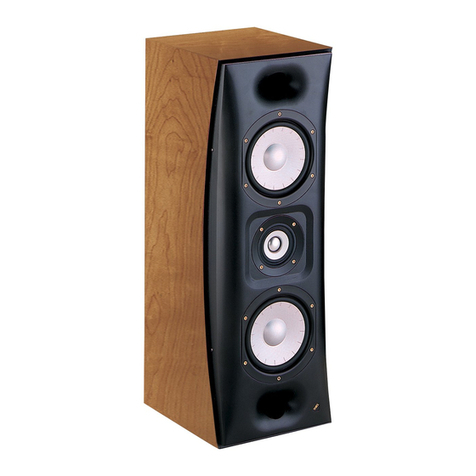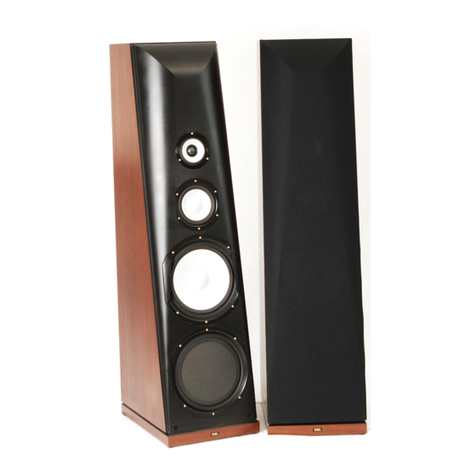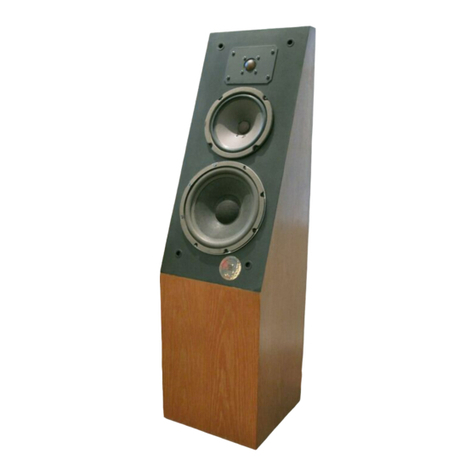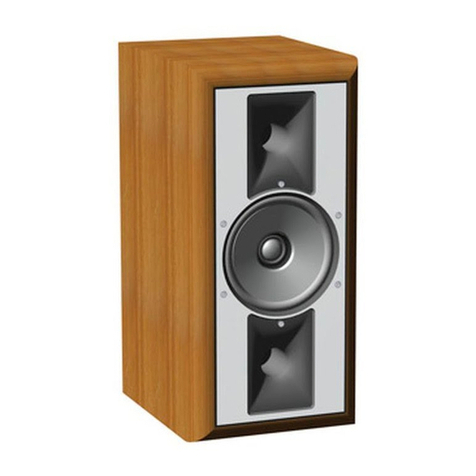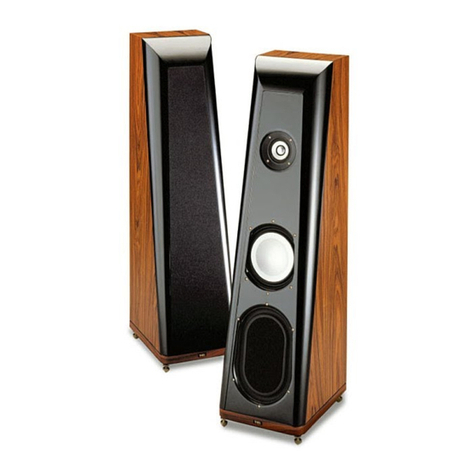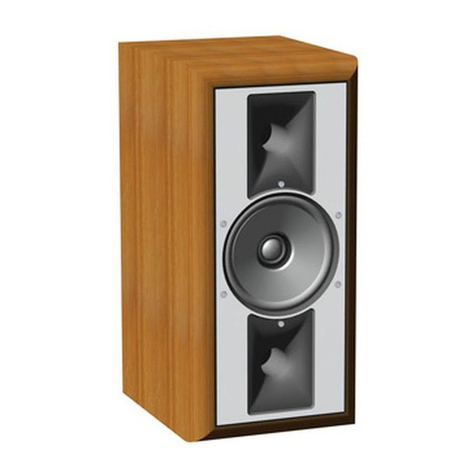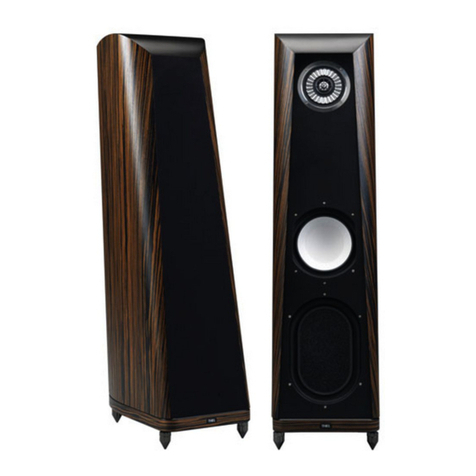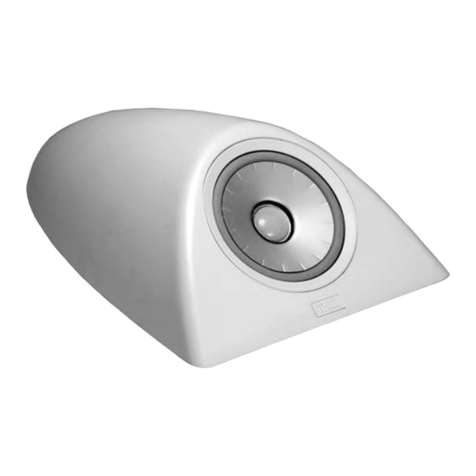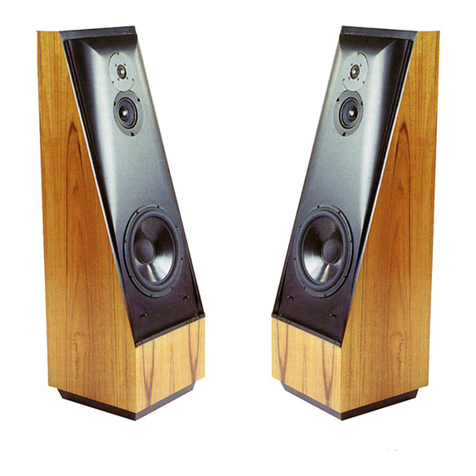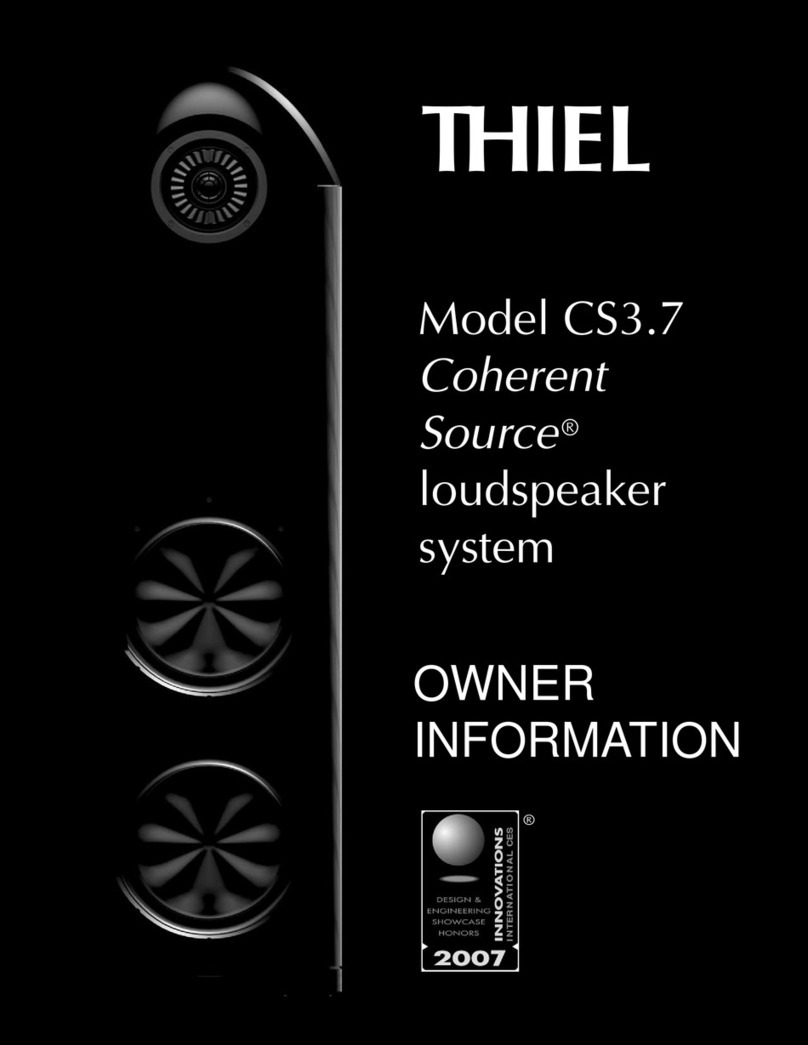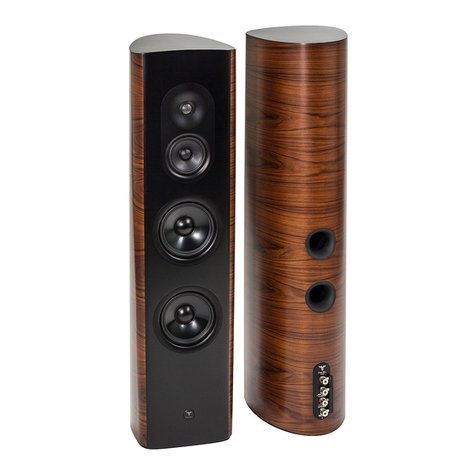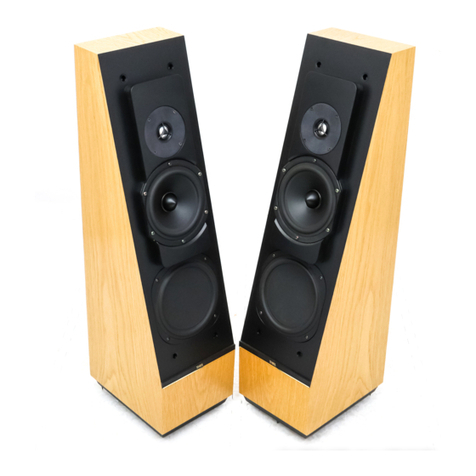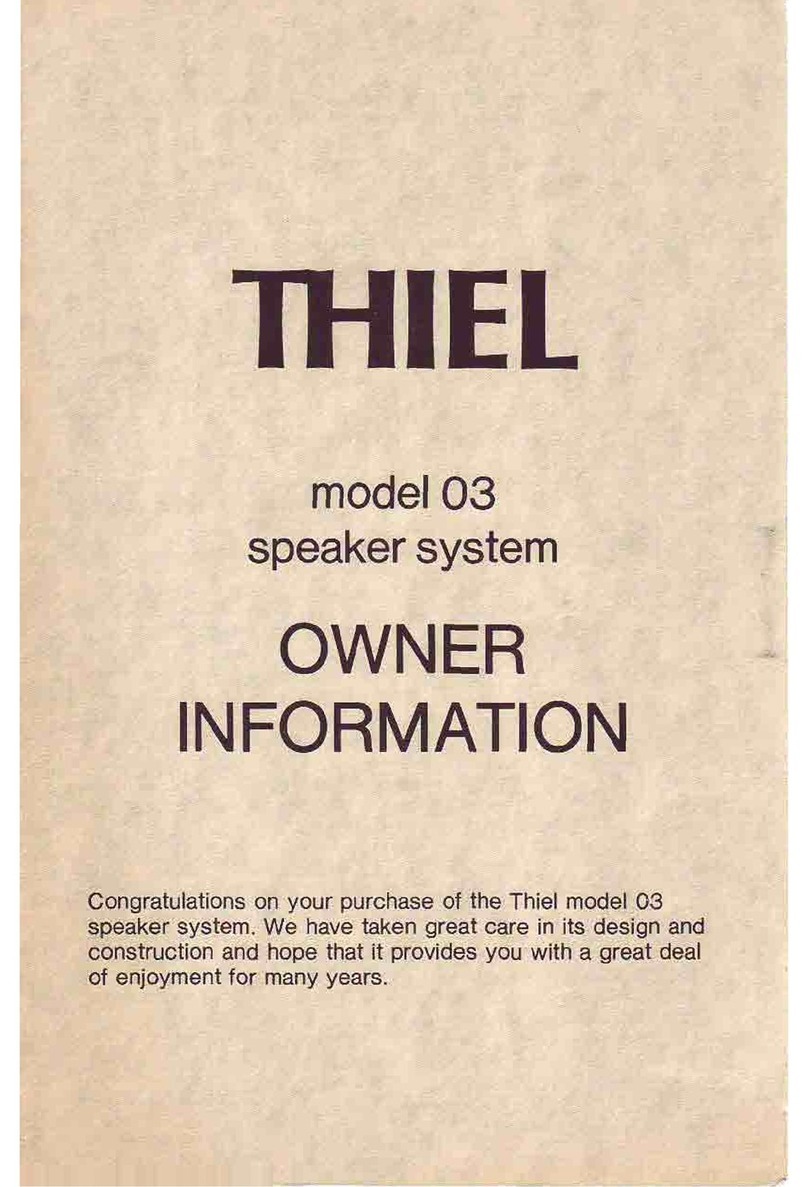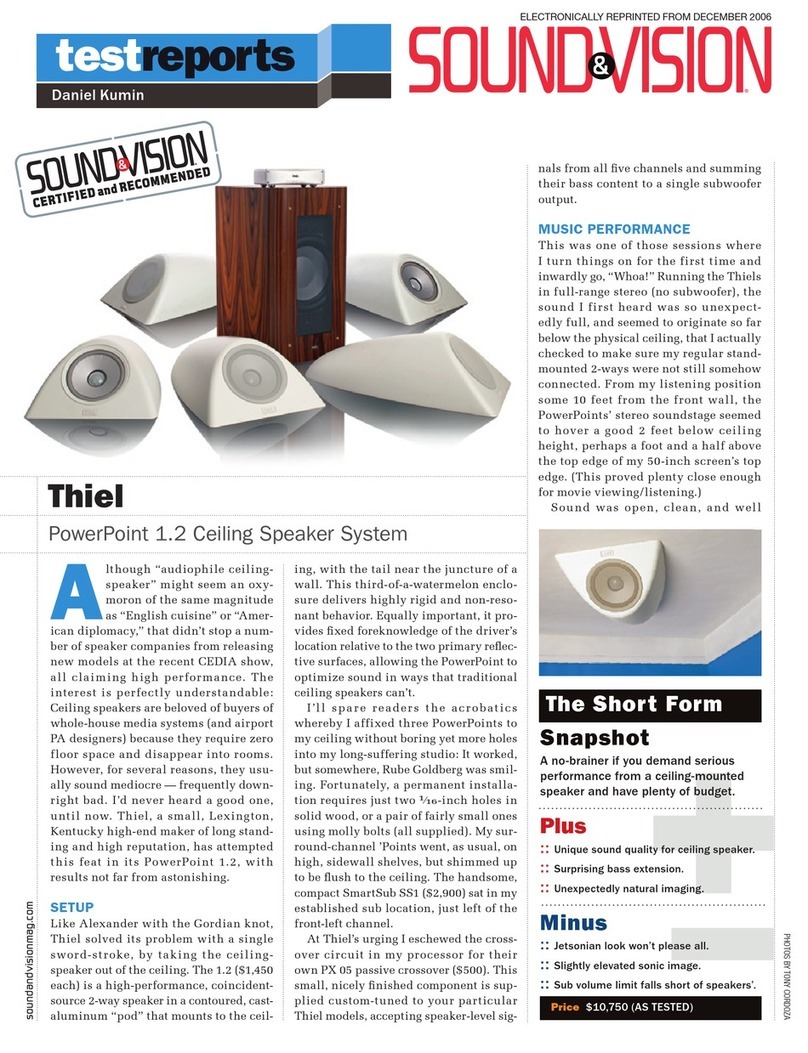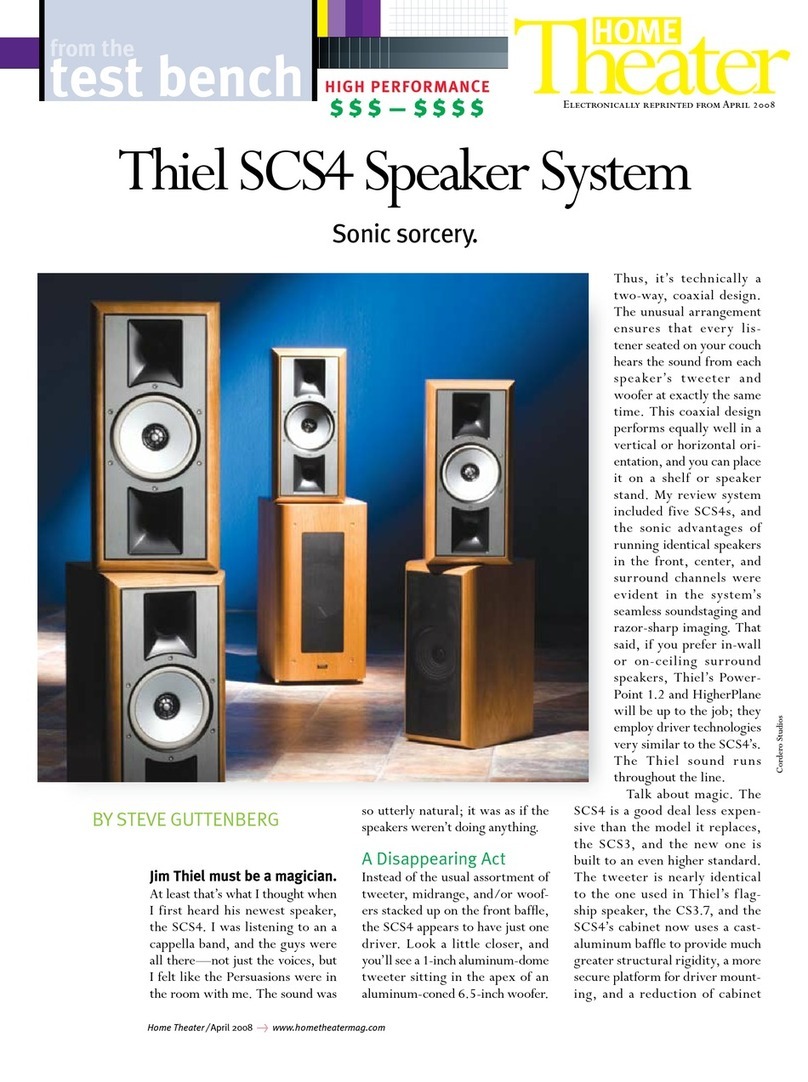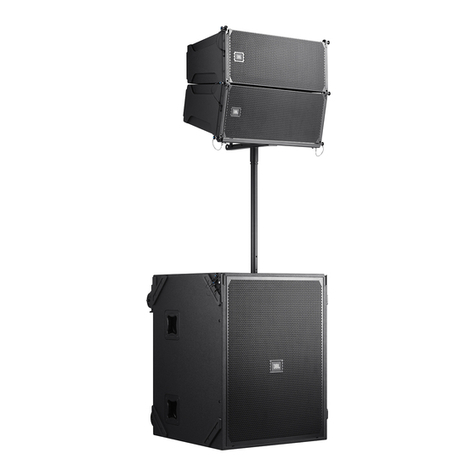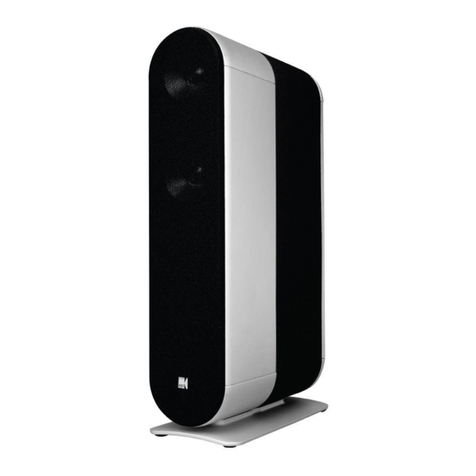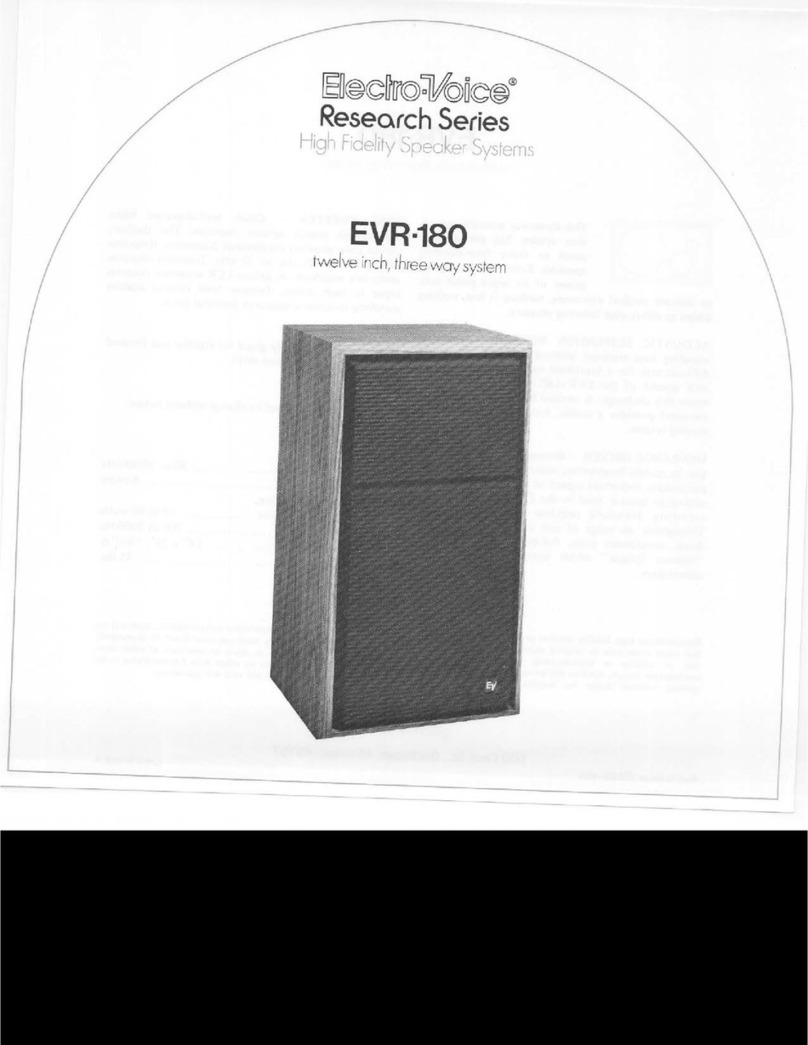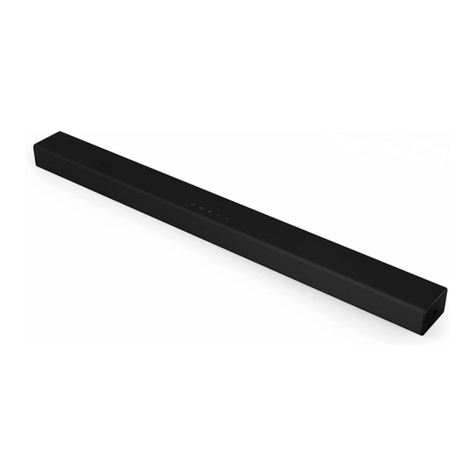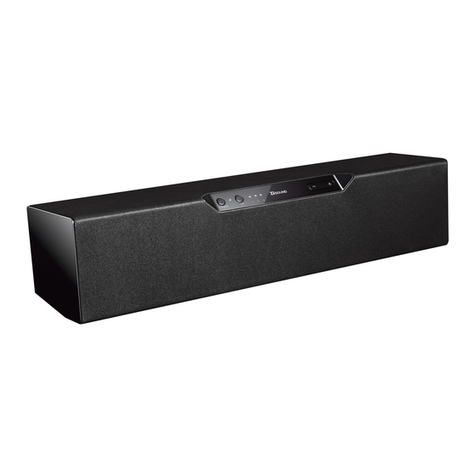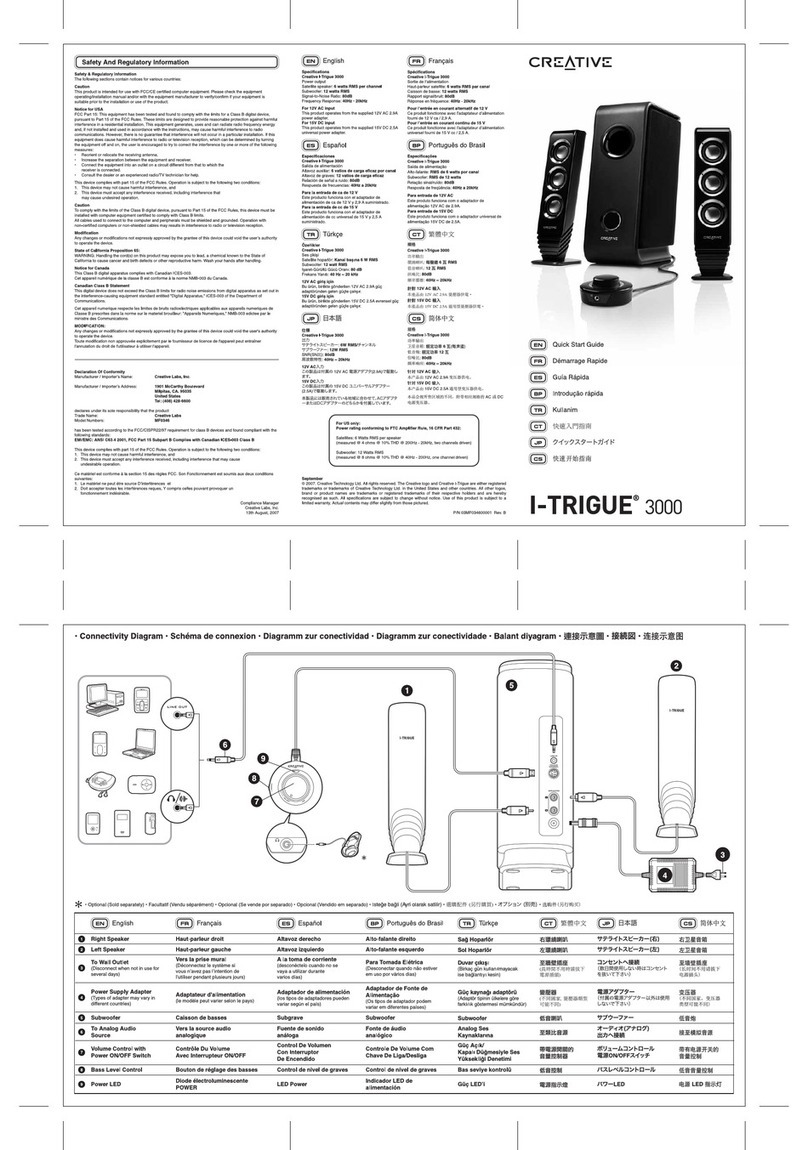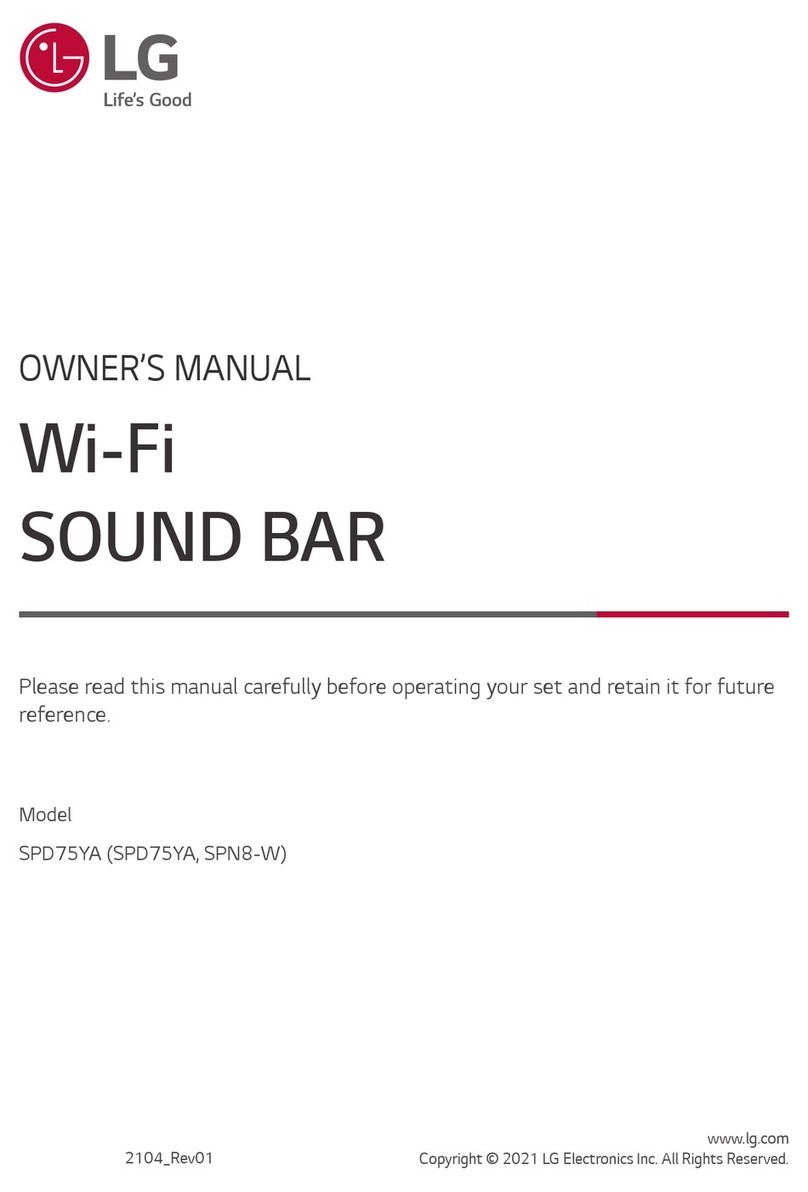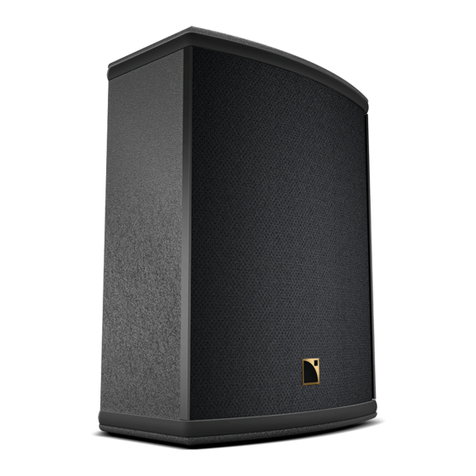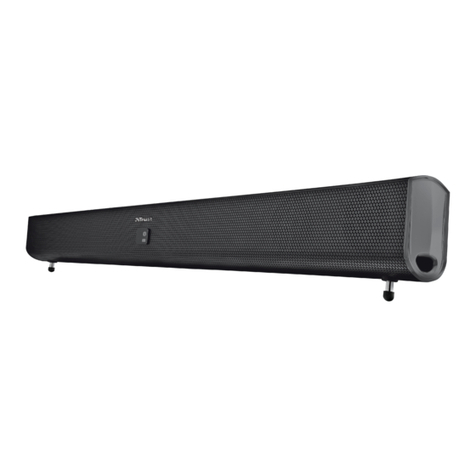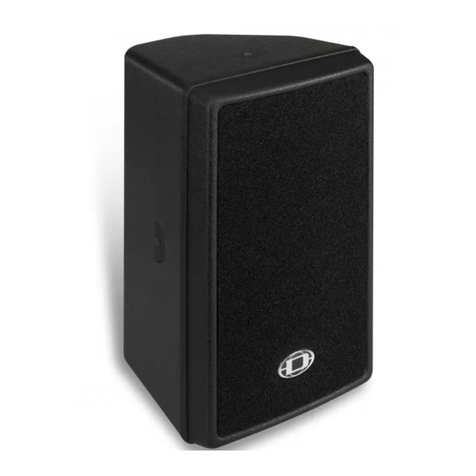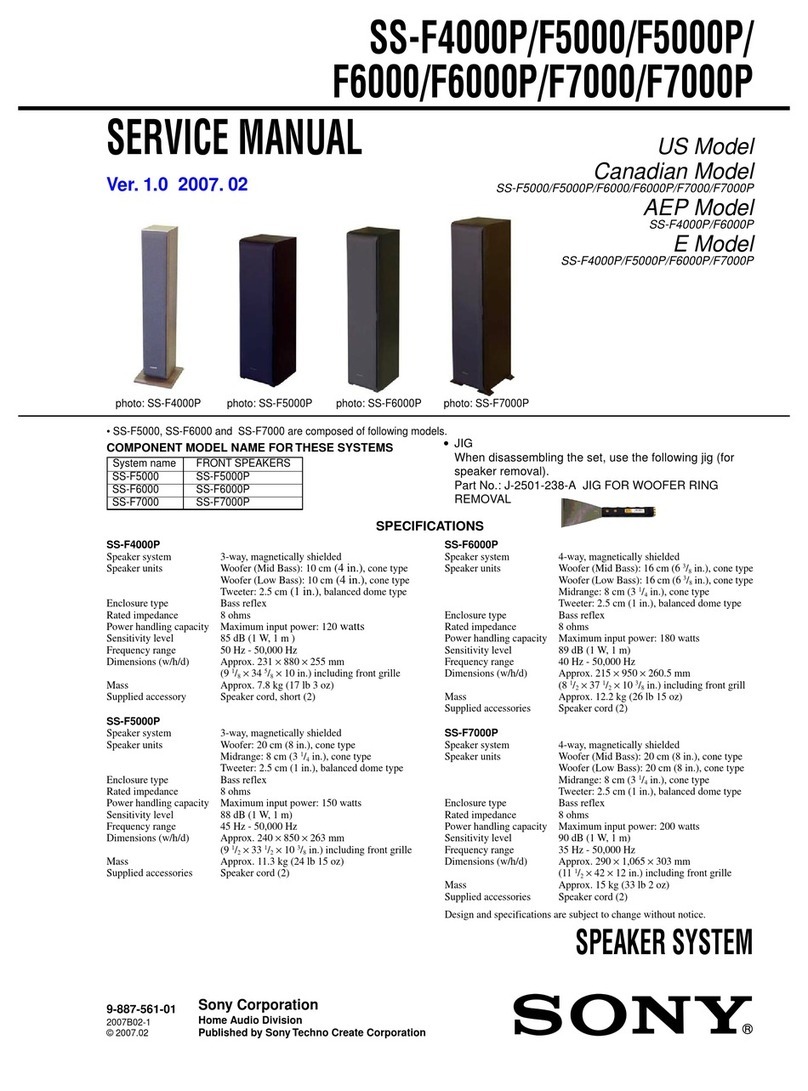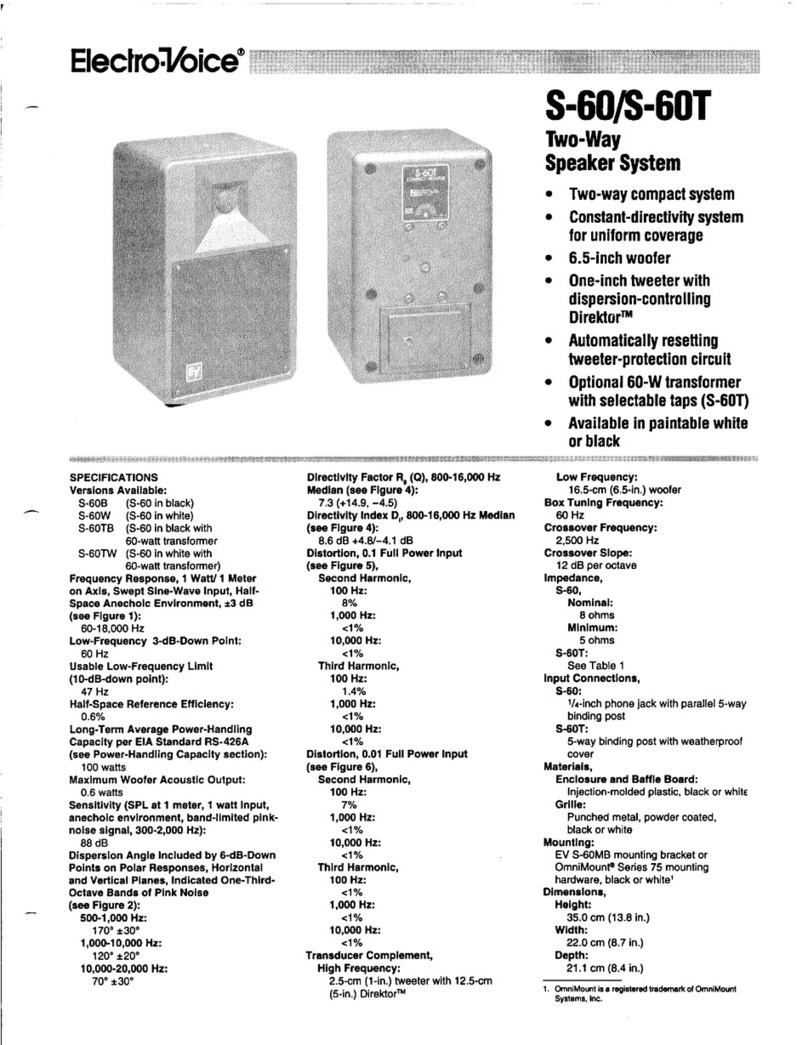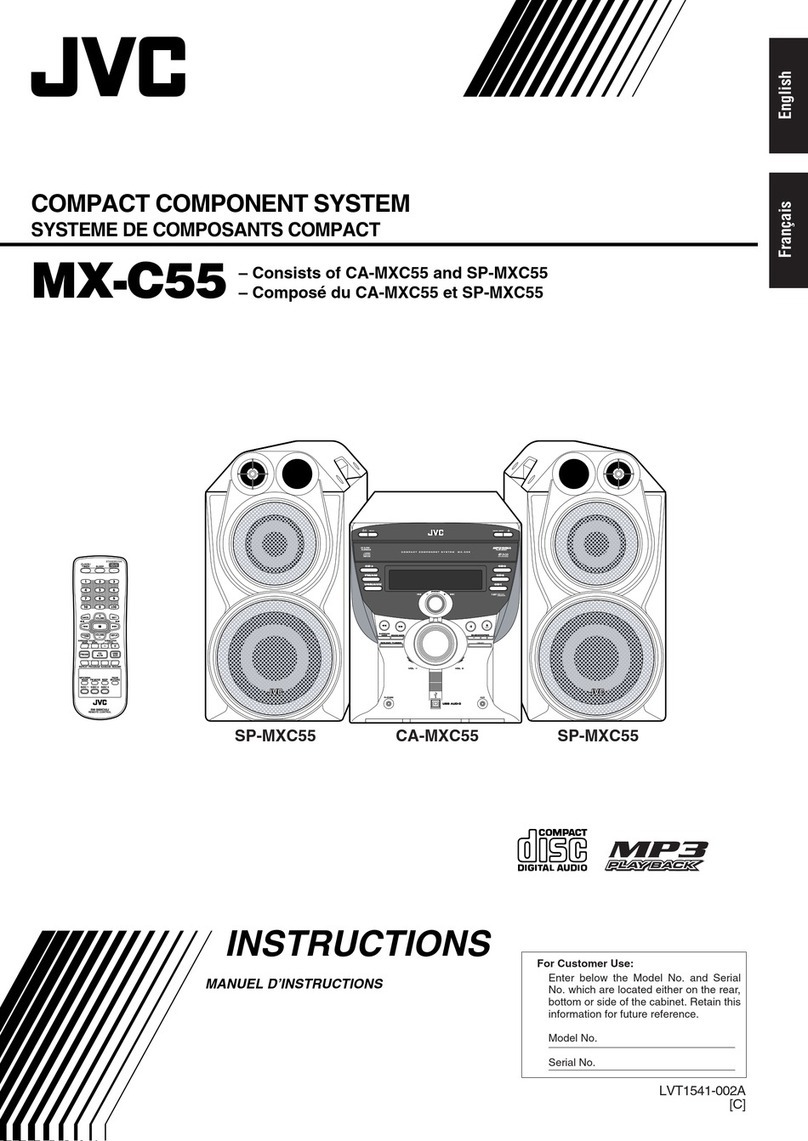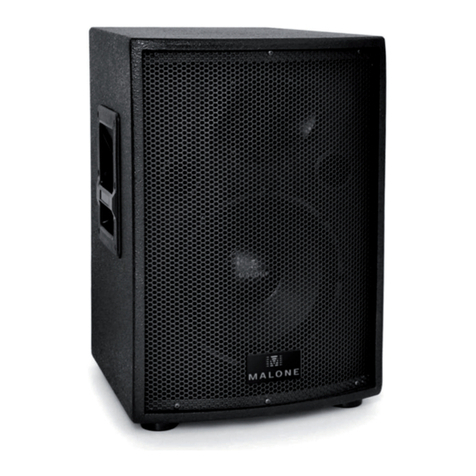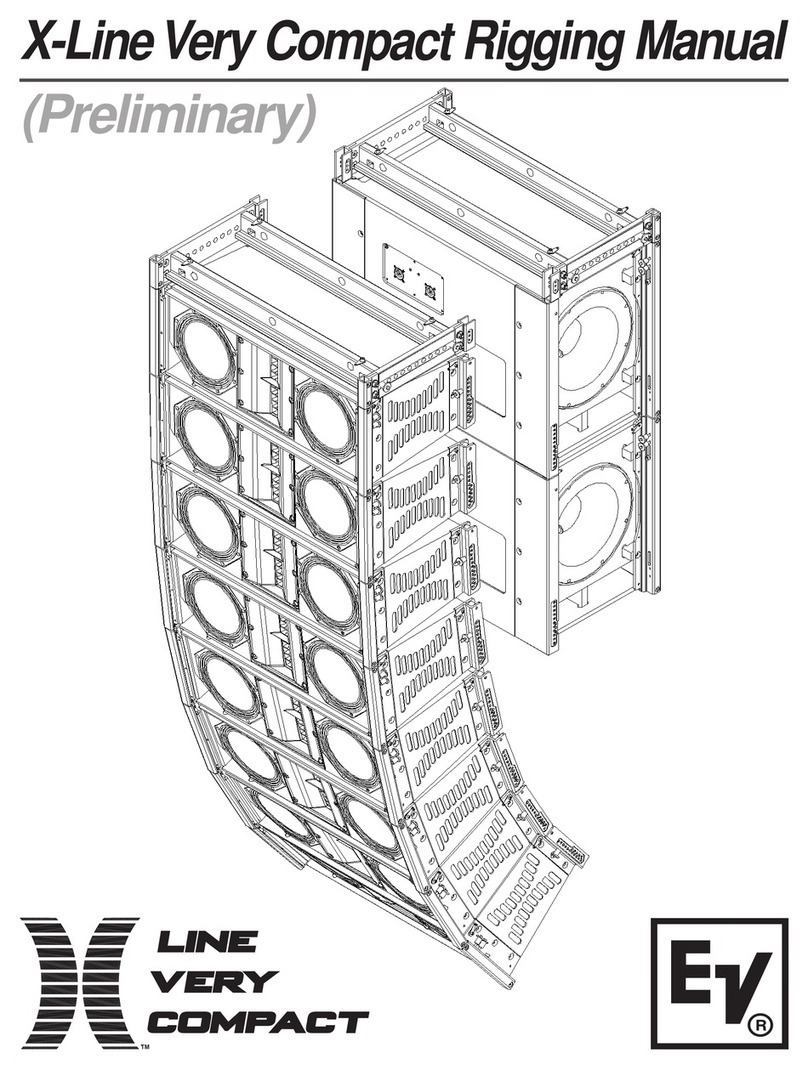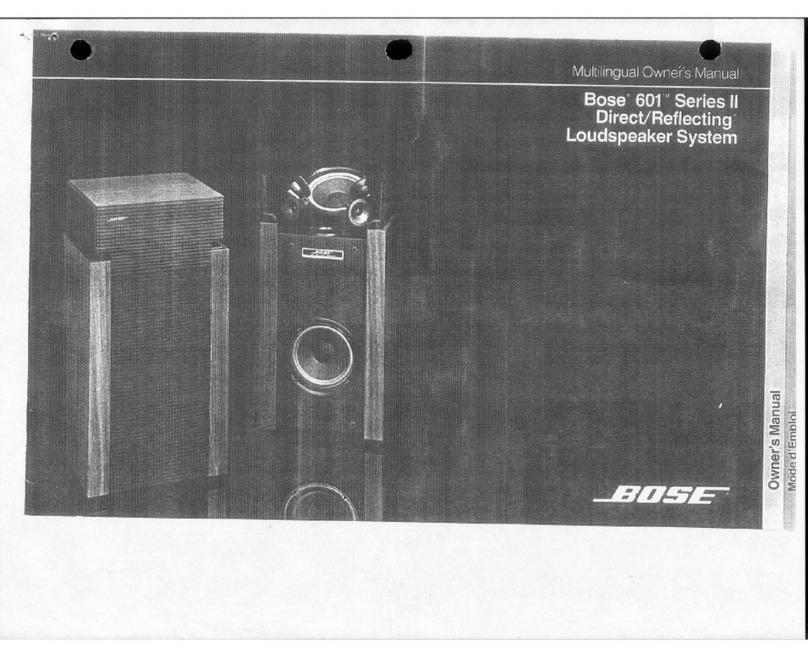
NEW MIDRANGE DRIVER
The most important reason for the improved sonic
performance of the CS3.7 is its new midrange driver. This driver
was developed to solve two problems that otherwise exist in
midrange performance – diaphragm resonances and tweeter
interference. Before explaining the new solutions I will review the
problems that have been addressed by the new design.
Review of the Basic Problem
Drivers produce sound by moving their diaphragms in and out
following the waveform of the input signal. Ideally, the
diaphragm moves as a whole, every point moving the same as
every other point. This is called “piston” movement. All
diaphragms achieve piston operation at low frequencies but as the
frequency increases a point is reached where the movement of the
diaphragm “breaks-up”, with different parts of the diaphragm
moving independently of other parts. At these higher frequencies
the diaphragm is internally resonating, meaning that it is
oscillating of its own accord. These resonances cause the sonic
output of the driver to “ring” at these frequencies, producing sonic
output when it’s not supposed to. The resonances also cause some
frequencies to be exaggerated and others to be diminished,
changing the tonal character of the sounds being reproduced.
Previous state-of-the-art
The approach that THIEL has pursued to minimize the effects
of diaphragm breakup is to develop diaphragms that are stiff
enough to maintain piston operation throughout their primary
operating range. This is achieved by using aluminum as the
material, careful engineering of the diaphragm’s shape,
laminating the aluminum with styrene foam to stiffen and damp
the diaphragm and the use of larger diameter voice coils. These
techniques can result in diaphragms that have a much greater
range of frequencies reproduced under piston operation. An
example of such a driver is the THIEL CS6 midrange whose
response is shown here.
This
driver
exhibits
exceptionally
good
response,
with piston
operation
being
maintained to
beyond 5 kHz, almost an octave above its primary operating range
of 3 kHz. In addition, the resonant behavior that is exhibited at
high frequencies is much simpler than usual, basically consisting
of only one resonance below 10 kHz. This simplicity of resonant
behavior provides the advantage of making it feasible to
electrically correct and compensate for the dominant resonance.
The response exhibited after such electrical correction is graphed
here. This is
exceptionally
wide band
and
resonant-free
operation.
The Remainder
However, it is still true that what imperfections remain in the
midrange performance are primarily due to the residual effects of
the diaphragm resonances that do exist. And, therefore, to achieve
even better performance requires further improvement in
diaphragm behavior.
An Additional Problem
There is an additional problem concerning the midrange driver
that we wish to address. This second problem exists only as a by-
product of solving another problem (this type of situation is not
uncommon in loudspeaker design). The “other” problem in this
case is that of time coherence. Time coherence describes that all
component harmonics of every sound reach the listener’s ears at
the same time and is achieved by positioning the drivers so that
each is the same distance from the listener’s ears. THIEL uses two
techniques, singly or in combination, to achieve time coherence in
all our products. One technique is to mount the drivers on a sloping
baffle and adjust the angle of the slope and the driver spacing to
achieve coherence. This can work well for floor standing speakers,
especially at lower frequencies. But it cannot work for non floor
standing speakers where the location of the speaker is unknown,
and in any case the accuracy of the results at high frequencies
becomes somewhat dependant on the listener’s position. For this
reason, a better technique for time coherence at higher frequencies
is to mount the tweeter coincidently (both coaxially and
coplanarly) with the midrange driver. Such mounting ensures that
the sound from both drivers always reach the listener at exactly the
same time, regardless of where the speaker is placed or where the
listener is. Such mounting also completely eliminates any “lobing”
in the speaker’s radiation pattern.
Our “additional problem” is that such coincident mounting of
the tweeter in the center of the midrange driver alters the tweeter’s
output due to reflections and diffractions from the midrange
diaphragm. This effect is illustrated by the two graphs below. The
first shows the tweeter response as being extremely uniform and
free of resonances to beyond audibility. The second shows the
response when mounted in a normal midrange driver. The
detrimental alterations are clear. Even after electrical correction the
response leaves room for improvement.
Large distance from voice coil
to edge of diaphragm allows
diaphragm resonances at
frequencies lower than desirable.
Tweeter in the recessed shape
of the midrange cone causes
diffraction/ reflection problems.
voice coil
Midrange diaphragm
relies on resessed,
“cone” shape for strength.
Tweeter coaxially mounted in conventional midrange
10
100
5
0
-5
5
1kHz 10kHz
Response of CS6 midrange driver
10
100
5
0
-5
5
1kHz 10kHz
Response of CS6 midrange driver with electrical correction
100
5
0
-5
5
Amplitude — dB
1kHz 10kHz
Response of CS3.7 tweeter
100
5
0
-5
5
Amplitude — dB
1kHz 10kHz
Response of CS3.7 tweeter coaxially mounted in standard midrange




















